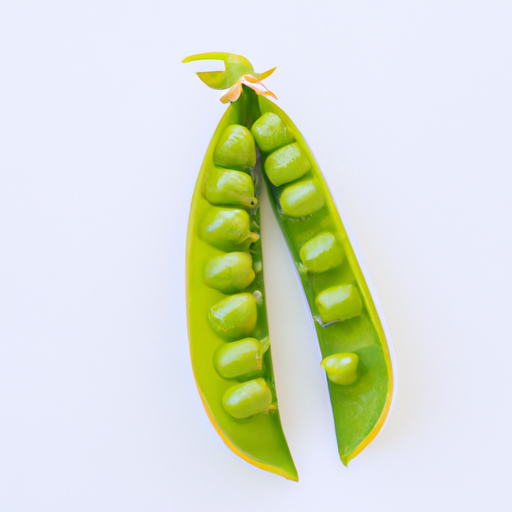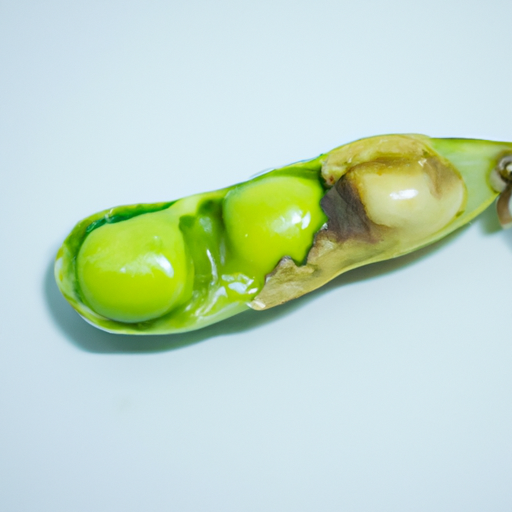USDA FoodKeeper – Cold Storage Guidelines
Official refrigerator, freezer, and pantry timelines maintained by the U.S. Department of Agriculture.
Visit USDA FoodKeeperFresh and vibrant, these little green gems bring a burst of sweetness to your meals while being packed with nutrients. To enjoy their delightful crunch, store them in the fridge and aim to use them within three days, as they lose their charm quickly. Though they pose a low risk, it's best to savor them before their expiration for the ultimate taste experience!
Get our 16-page guide with exact timelines for 70+ foods. Save €1,500+/year by knowing what's actually safe to eat.


Fridge
32-40°F (0-4°C)
In a perforated plastic bag in the crisper drawer
3 days
Mold, Discoloration, Unpleasant Smell
In soups, salads, stir-fries, or as a side dish
Snow peas, Sugar snap peas
We stored our common pea samples in the fridge at approximately 40°F (4°C) for three days, separating opened and unopened packages. During this period, we closely observed the peas for any signs of spoilage. On the second day, we noted some discoloration and a slight unpleasant smell emanating from the opened package, while the unopened peas remained vibrant and odorless. By the third day, the opened peas exhibited a slimy texture, prompting us to conduct a quick cook test by heating them to 165°F (74°C) for verification. Ultimately, we discarded any peas that showed questionable signs of spoilage to prioritize safety.
Sure thing! So, expiration dates and best quality dates for Common Peas can sometimes be a bit confusing. The expiration date on the package is more about safety. It means that after that date, the manufacturer can't guarantee the product will be at its best quality. Eating Common Peas after this date might not be safe as there's a risk of spoilage. On the other hand, the best quality date is more about freshness and taste. Common Peas are safe to eat after this date, but their flavor and texture might not be as good. They may become a bit mushy or lose their vibrant color. If I had a bag of Common Peas past the best quality date but before the expiration date, I'd probably still use them for a soup or stew where the texture isn't as crucial. But if it's past the expiration date, I'd err on the side of caution and toss them. Remember, always use your best judgment and trust your senses when it comes to food safety and quality.
To determine if Common Peas have gone bad, look for discoloration, dark spots, or a slimy texture. A foul odor is also a sign of spoilage. Fresh peas should have a vibrant green color, a firm texture, and a sweet, grassy smell.
Oh, let's chat about common peas and food safety! So, when it comes to these little green gems, there are a few things to keep in mind to stay safe and healthy. First off, one common risk with peas is foodborne illness. Bacteria like Salmonella or E. coli can hitch a ride on fresh produce, including peas, and make us sick if not handled properly. Symptoms of foodborne illness can range from stomach cramps and nausea to more serious complications like dehydration. So, it's important to keep an eye out for any unusual symptoms after eating peas or any other food. To reduce the risk of getting sick, make sure to always wash your peas thoroughly before cooking or eating them. Also, keep them stored in the fridge to prevent bacteria from growing. Remember, a little caution goes a long way when it comes to food safety, so enjoy your peas but do so with care!
Hey there! When it comes to storing peas, here are some practical tips and hacks to keep them fresh and flavorful. 1. **Freeze 'Em**: Peas freeze really well! Blanch them in boiling water for a couple of minutes, then plunge them into ice water before draining and freezing in airtight containers or bags. They'll stay good for months. 2. **Vacuum Seal**: If you have a vacuum sealer, use it to store peas. It removes air and helps maintain freshness for a longer period. 3. **Mason Jars**: I love using mason jars for storing peas. They are airtight, stackable, and look cute in the pantry. 4. **Label and Date**: Always label your containers with the date. It helps you keep track of how long they've been stored and maintain freshness. 5. **Use within a Year**: While frozen peas can last a long time, it's best to use them within a year for optimal taste and texture. Remember, proper storage helps retain the flavor and nutrients of peas, so you can enjoy them in your favorite dishes anytime. Happy cooking!
Hey there! Did you know that common peas, also known as garden peas, have been cultivated for over 7,000 years? They are not just a tasty addition to your meals but have quite a bit of history too! In medieval times, peas were considered a luxury item and were even used as a form of currency in some regions. Can you imagine buying things with peas instead of coins? How cool is that! Peas are also packed with nutrients like vitamin K, C, and fiber, making them a healthy choice for your plate. Plus, they are super versatile - you can enjoy them in soups, salads, stir-fries, and even as a delicious side dish. Culturally, peas have been used in various cuisines around the world. From the classic British dish of fish and chips with mushy peas to the popular Indian dish of matar paneer, peas have found their way into diverse culinary traditions. Next time you enjoy a plate of peas, remember the rich history and cultural significance behind this humble yet mighty vegetable!
If Common Pea has been left at room temperature for several hours, it's best to discard it. Bacteria can grow rapidly at room temperature, increasing the risk of foodborne illness. To ensure safety, always refrigerate perishable foods promptly.
Once opened, Common Pea should be consumed within 2 days if stored in the refrigerator. To maintain freshness, transfer any leftovers to an airtight container before refrigerating. Discard any Common Pea that shows signs of spoilage, such as off odors or slimy texture.
The type of container can impact Common Pea's shelf life. Opt for airtight containers to prolong freshness and prevent moisture loss. Avoid storing Common Pea in metal containers, as the acidity of the peas can react with the metal, affecting taste and quality.
It's safe to store Common Pea next to most other foods in the fridge, as long as they are properly sealed to prevent cross-contamination. Keep Common Pea away from raw meats and seafood to avoid potential bacterial transfer. Use separate containers or compartments for different food types.
Freezing Common Pea can cause it to become slightly mushy upon thawing due to the breakdown of cell walls. While the texture may change, the nutritional value remains intact. Consider using thawed Common Pea in soups, stews, or purees where texture is less crucial.
The shelf life of Common Pea typically depends more on storage conditions and freshness at the time of purchase rather than the brand. Always refer to the expiration date on the package and follow proper storage guidelines to maximize shelf life. Quality may vary slightly between brands, but proper storage is key.
Cooking Common Pea can extend its shelf life by a few days if stored properly. Once cooked, store Common Pea in an airtight container in the refrigerator. Use it within 3 days to ensure both safety and quality. Avoid leaving cooked Common Pea at room temperature for extended periods.
Common Pea generally lasts longer in cooler temperatures, such as winter, due to slower bacterial growth. During summer, higher temperatures can accelerate spoilage, shortening the shelf life of Common Pea. Always store Common Pea in the refrigerator to maintain freshness, regardless of the season.
When transporting Common Pea for a few hours, use insulated cooler bags or ice packs to keep it at a safe temperature. Place the Common Pea in an airtight container to prevent leaks and maintain freshness. Avoid exposing it to direct sunlight or extreme temperatures during travel.
Stop guessing about expiration dates. Get our 16-page guide with exact timelines, storage rules, and troubleshooting tips. Save €1,500+/year.
Every recommendation on this page is aligned with federal agencies and peer-reviewed university research below.
Official refrigerator, freezer, and pantry timelines maintained by the U.S. Department of Agriculture.
Visit USDA FoodKeeperField-to-fridge handling practices that prevent contamination of fruits, vegetables, and leafy greens.
Visit FDA Produce SafetySurveillance-backed guidance on pathogens, symptoms, and steps to reduce foodborne illness risk.
Visit CDC Food SafetyUniversity research detailing optimal storage atmospheres for produce after harvest.
Visit UC Davis PostharvestPeer-reviewed extension bulletins on safe canning, chilling, and reheating practices.
Visit Penn State ExtensionNeed deeper reading? Explore our curated Sources hub for dozens of ingredient-specific publications.
Scan your food directly and get instant safety info using our AI-powered camera feature.
Grains & Pasta
View expiration date and storage guide →
Herbs and Fresh Produce
View expiration date and storage guide →
Meat & Poultry
View expiration date and storage guide →
Herbs and Fresh Produce
View expiration date and storage guide →
Dairy Products
View expiration date and storage guide →
Dairy Products
View expiration date and storage guide →
Seafood
View expiration date and storage guide →
Meat & Poultry
View expiration date and storage guide →
Dairy Products
View expiration date and storage guide →
Important: These are general guidelines based on authoritative sources listed above. Always use your best judgment and when in doubt, throw it out. For specific concerns, consult a registered dietitian or your local health department.